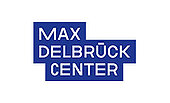HDLBP overexpression enhances protein production and secretion
Keywords
Bio Production, Therapeutic Proteins, Biologics, Biosimilars
Invention Novelty
The production of biopharmaceuticals is a central pillar of health care. Means to optimize and enhance recombinant protein production for medical purposes, is of great social and economic importance. Modulation of the complex secretion pathways in cell culture systems allows optimized production but can be accompanied by negative effects on cell proliferation. The present invention overcomes this limitation by providing a novel method for improved secretion of recombinant proteins through targeted codon optimization and simultaneous expression of the RNA-binding protein HDLBP in the mammalian expression system.
Value Proposition
With the continued expansion of the biotherapeutics market, the demand for proteins derived from mammalian expression systems continues to grow, and the biopharmaceutical industry faces the challenge of efficiently producing these proteins in large quantities. Accordingly, new strategies and methods for increased production, expression, and secretion of recombinant proteins including growth factors and antibodies in cellular expression systems are required. The present invention provides a method to engineer a next level cell factory generated through a holistic approach that considers all the bottlenecks in the protein expression process such as transcription, translation, protein folding, secretion, and cell viability.

(A) Relative expression of EPO-Fc in the culture medium from cells without HDLBP overexpression (Parental cells) and HDLBP-overexpressing CHO cells (HDLBP+ cells) stably transfected with EPO-Fc (EPO WT) and codon-optimized EPO-Fc construct (EPO Opt) as determined by ELISA assay.(B) Relative expression of antibodies, LC-HC and J22, in the culture medium from cells without HDLBP overexpression (Parental cells) and HDLBP-overexpressing CHO cells (HDLBP+ cells) as determined by ELISA assay (modified by Minia and Landthaler).
Technology Description
Based on fundamental biochemical, transcriptomic, and proteomic studies, the researchers identified the important role of the RNA-binding protein HDLBP as an enhancer of translation at the endoplasmic reticulum and subsequent secretion of proteins in eukaryotic cells. As demonstrated in CHO cells, targeted codon-optimization of the respective gene of interest and concomitant expression of HDLBP leads to an increased secretion of human erythropoietin (EPO-Fc) of up to 290%. % and antibodies of up top 80-85%. Bioactivity assays are currently ongoing. Strikingly, this method does allow high cell density growth and it can be adapted in context of any expression system providing a high degree of flexibility and adaption to the desired secreted protein of interest.
Key Advantages:
✅ Significant increase in protein secretion: notable enhancements in secretion of human erythropoietin (EPO-Fc) and antibodies.
✅ Robust cell proliferation: Our method supports sustainable and scalable production with high cell density growth.
✅ Versatility and adaptability: Compatible with various expression systems, our technology offers flexibility to meet diverse production needs.
Commercial Opportunity
This opportunity is available for in-licensing; strategic partnership for further development is highly welcome.
Development Status
CHO cells expressing EPO-Fc and antibodies. Further upscaling of the process is currently established.
Patent Situation
WO2023030914A1 (Increase of protein expression and secretion by artificial co-expression of hdlbp/vigilin). National phases will be entered in EP, US, CA, CN, JP, South Korea, and India.
Further Reading
Zinnall, U. et al.: HDLBP binds ER-targeted mRNAs by multivalent interactions to promote protein synthesis of transmembrane and secreted proteins. Nature Communications 13, 2727 (2022).




